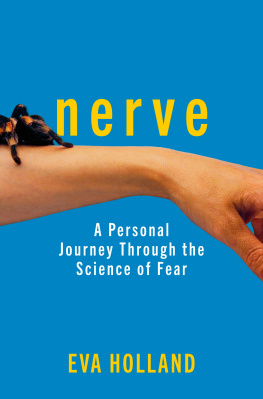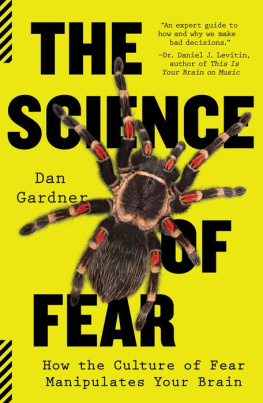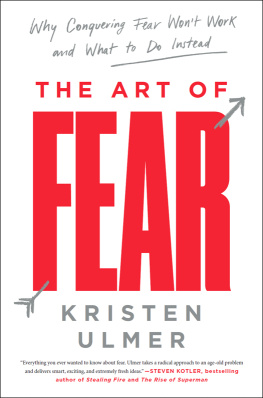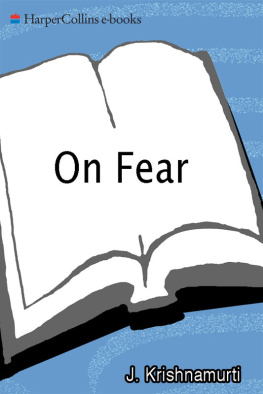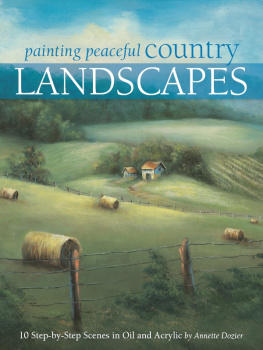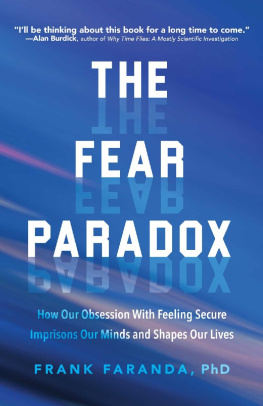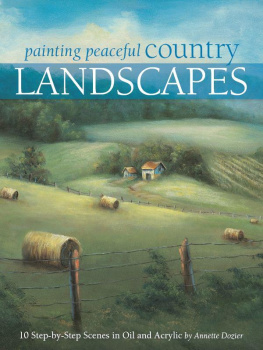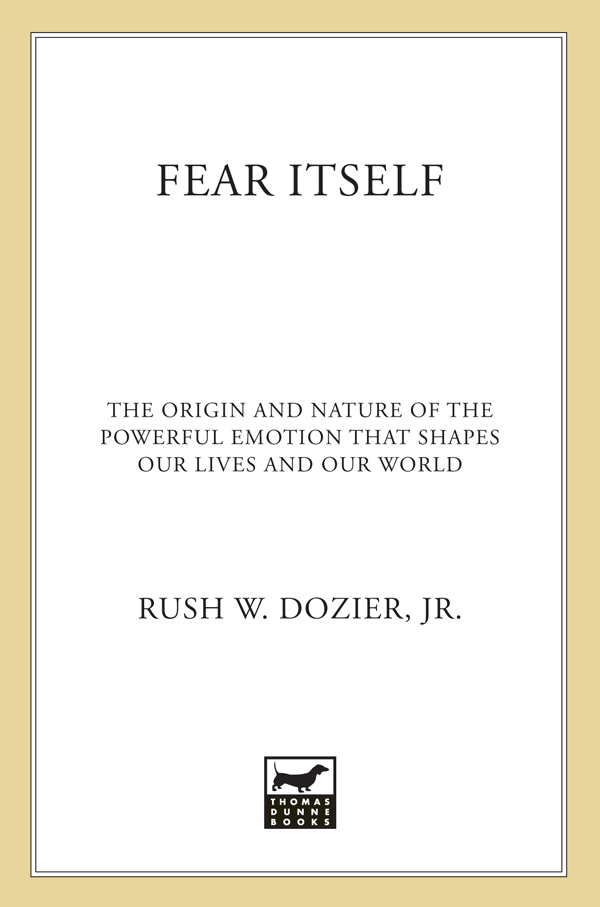Contents
Guide

The author and publisher have provided this e-book to you for your personal use only. You may not make this e-book publicly available in any way. Copyright infringement is against the law. If you believe the copy of this e-book you are reading infringes on the authors copyright, please notify the publisher at: us.macmillanusa.com/piracy.
For my wife, Patricia.
This book is as much yours as it is mine.
Helplessness is a persistent theme in any study of human fear. We dread it. We fight it. We avoid it. We are so much more comfortable without it. Yet like a recurring nightmare it manages to slip, usually without warning, into our livessometimes spectacularly, as when something goes terribly wrong on a ship or a plane, but usually in more mundane circumstances, as when some seemingly ordinary event veers alarmingly out of control. When we unexpectedly hit a patch of ice while driving a familiar route, that sickening, sinking feeling in the pit of the stomach is a universal signal of helpless fear.
A writer hits those icy patches all too frequently in the process of research and composition and it is a pleasure to acknowledge the people who help set things back on course, at least temporarily. My wife, Patricia, provided invaluable advice and assistance at every stage of this challenging project. I hope portions of this book convey in some small way the fun I had growing up. For these warm memories, I would like to thank my parents and my brother, Ray. I have had to look no further than my daughter, Beverly, for an inspiring example of phenomenal bravery. At St. Martins Press my editor, Tom Dunne, associate editor Melissa Jacobs, copy editor Deborah Miller, and production editor Bert Yaeger have been exceptionally helpful.
Of the many people I have consulted on this project, I would like to single out a few for special thanks. Writer-director James Cameron graciously took time out from a busy schedule to help me understand the many dimensions of fear in his extraordinary film Titanic. Congressman Randy Duke Cunningham, a legendary Navy fighter pilot who now represents the northern section of San Diego County, gave me an exhilarating sense of what air combat was like during the Vietnam War. I have greatly benefited from the advice, comments, and general wisdom of Joseph LeDoux, Henry and Lucy Moses Professor of Science, New York University, Antonio Damasio, M.W. Van Allen Professor and head of the Department of Neurology at the University of Iowa College of Medicine, Thomas Albright, professor and director of the Sloan Center for Theoretical Neurobiology at the Salk Institute in La Jolla, California, James McGaugh, director of the Center for the Neurobiology of Learning and Memory at the University of California at Irvine, Douglas Galesko, associate professor of neuroscience, University of California at San Diego, and reference librarian Martin Hollick of Harvard Universitys Lamont and Widener libraries. Although I have profited from the insights of many in the writing of this book, responsibility for the contents and conclusions of Fear Itself is mine alone.
What is that thunder that booms within my chest,
That lightning that crashes in my head?
What is that silence so still it cannot be heard,
That darkness I cannot see when I am dead?
It is the unknown, permeating my body and stopping my mind.
I know only its looming shadow;
And that shadow is fear.
Patricia June Dozier
It is the quintessential human emotion. Some people live lives devoid of joy, happiness, and pleasure but no one escapes the experience of fear and fears companion, pain. We are born in fear and pain. Our lives are profoundly shaped by them, as well as our efforts to avoid them. We die in fear and pain.
Fear of death, disease, injury, poverty, and countless other fears mold the most mundane aspects of our existence: what we eat, how we drive, where we work. Yet fear also molds our highest nature and the grandest tides of world history. By facing and overcoming our fears, we mature and fulfill our deepest human potential. Fear can make us embrace or deny God, choose good over evil. It can start wars, or end them. Our attitude toward fear dictates how societies are structured. Do we trust people to govern themselves or do we base our social controls on terror, violence, secret police, and hatred of outsiders?
What is fear? Where does it come from? What purpose does it serve? Why are some fears universal? Why do others differ from person to person and culture to culture? Can fear be enjoyed? Can we die of it? Live without it? How can fear be transformed from a destructive to a constructive force in our lives? This book will explore all these questions in a wide-ranging examination of this universal human emotion and its pervasive effects on individuals and societies. For the first time in history, we are in a position to provide scientific insights and concrete answersrevealing the nature of fear itself.
At sixteen I was like every other teenager in America who had just gotten his drivers license. I wanted to joyride with my friends. The feeling of freedom and independence was delicious. The feeling of responsibility was less intense. Frankly, Im amazed any of us survived to adulthood.
One Saturday night, five of us piled into my best friends car. I was riding shotgunsitting on the passenger side of the front seat. The summer night was soft and beautiful as we cruised along a country road through the corn and soybean fields of western Kentucky. Unexpectedly the car of another friend, also packed with teenagers, passed us going the other way. The second car slammed on its brakes and did a quick U-turn. The chase was on.
Our car accelerated down the narrow road, headed toward what seemed to be a gentle curve. At that speed it wasnt. Halfway through the curve we began drifting, out of control, off the road toward a high dirt embankment bordering a cornfield. The experience was terrifying. Time slowed down. As I stared out my window, the embankment seemed to move toward me in slow motion. I was frozen in my seat drenched in a sudden clammy sweat with an awful sinking feeling in the pit of my stomach. My pulse pounded in my ears. I was vividly aware of every blade of grass on that embankment.
With a loud bang, we hit. The car bounced in the air to the other side of the road and came to a stop. Everyone piled out. Miraculously no one was even scratched. I cant say the same for the car. Over the next half hour we milled around in a daze, counting our blessings and waiting for my friends father to drive out and take us home.
What I experienced was a classic fear reaction. Simply put, fear is the bodys way of anticipating and avoiding pain and the dangers pain signals: injury and death. At that moment I thought I was going to die. A series of automatic physical changes designed to maximize my chances of survival took place in my body.
Much of my blood was immediately diverted to the large muscles, particularly my legs, so that I would have the maximum energy necessary for a quick escape. The draining of blood away from the skin produces the characteristic paleness of fear. Perspiration oozing out of my pale, cool skin produced the sensation of a cold sweat. The pounding I heard was my overwrought heart at work and my skyrocketing blood pressure. Quick-energy hormones like adrenaline were pouring into my bloodstream and muscles. Sometimes this reaction goes awry and so much blood is diverted to the large muscles and away from the brain that a person faints. The odd feeling in my stomach was my digestive system contracting and turning off as all nonessential systems shut down in preparation for the escape.


